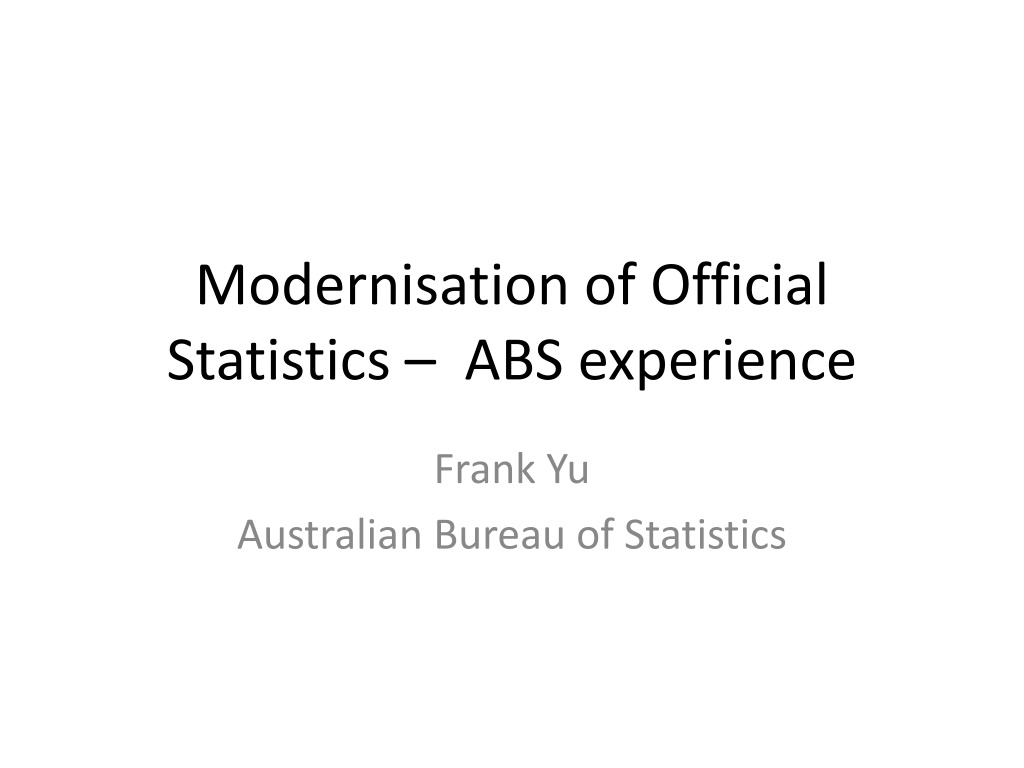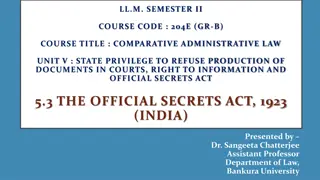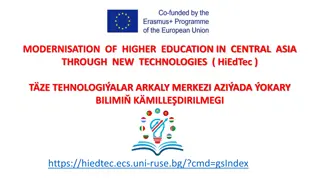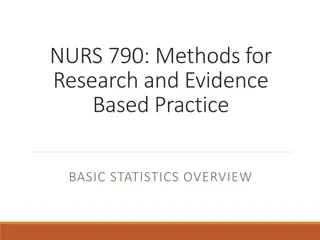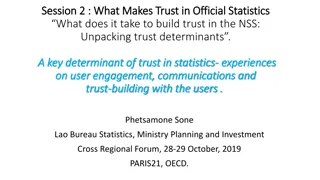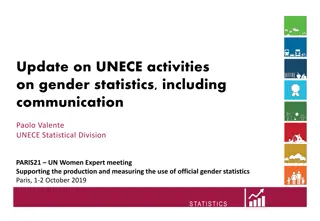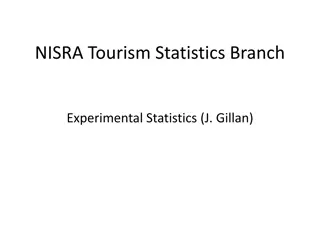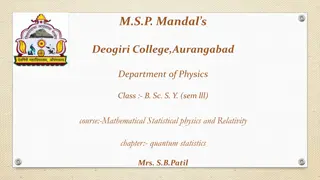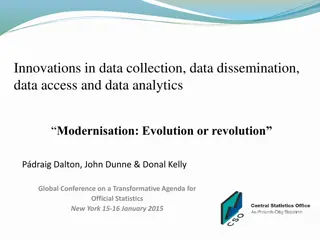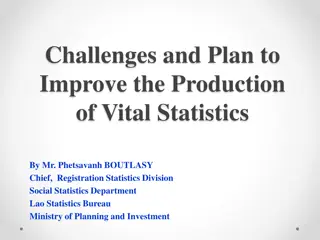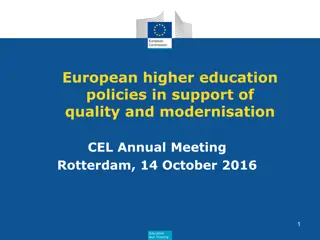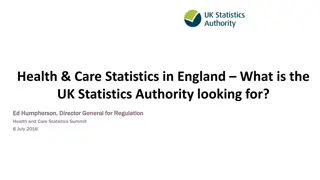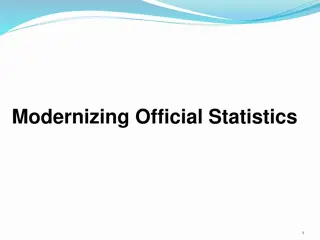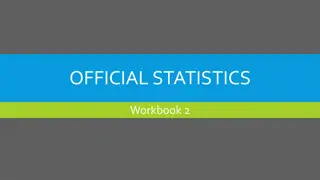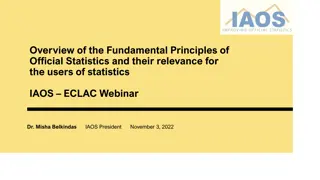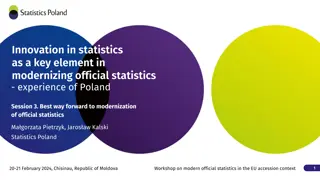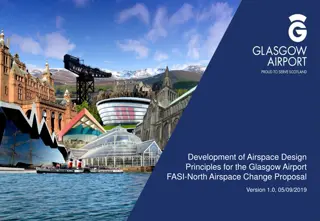The Modernisation of Official Statistics: Challenges and Goals
Modernising official statistics is essential for organisations like the Australian Bureau of Statistics to meet the challenges posed by big data, changing expectations, and limited resources. The ABS aims to reduce business costs, introduce new statistical products/services, and successfully execute digital Census operations to enhance efficiency, decision-making, user experience, and organisational sustainability.
Download Presentation

Please find below an Image/Link to download the presentation.
The content on the website is provided AS IS for your information and personal use only. It may not be sold, licensed, or shared on other websites without obtaining consent from the author. Download presentation by click this link. If you encounter any issues during the download, it is possible that the publisher has removed the file from their server.
E N D
Presentation Transcript
Modernisation of Official Statistics ABS experience Frank Yu Australian Bureau of Statistics
Content Modernisation: Why, what and how Challenges International Collaboration
The Challenges Riding the big data wave New competitors & changing expectations Increasing cost & difficulty of acquiring data Competition for skilled resources Diminishing budgets Rapid changes in the environment
Today Specify Needs Design Build Collect Process Analyse Disseminate Archive Evaluate Limited by available time Tools are unique and very labour intensive Limited activity in this area Generally one off solutions Focus on static publications Data stores held by individuals 90% data survey based Limited by tools and time
Today compared to Tomorrow Substantial increase in use of admin data, less direct collect Major focus of staff expertise Reuse and Assemble More focus on analysis, value add and data integration Corporate Solutions that fit most needs Focus on e- collect Data stored centrally Increased client engagement Greater interactive data Specify Needs Design Build Collect Process Analyse Disseminate Archive Evaluate Limited by available time Tools are unique and very labour intensive Limited activity in this area Generally one off solutions Focus on static publications Data stores held by individuals 90% data survey based Limited by tools and time
3 Key Goals The role of ABS 2017 is to build the statistical infrastructure and capability and reengineer the processes needed to deliver on 3 key goals: 1. Reduce the cost and time of doing business 2. Grow the business through new statistical products and services 3. Deliver the first digital Census (2016) on time, budget, and quality while delivering on Business As Usual. 7
If we achieve these goals, this will mean 1. A more efficient and effective ABS 2. Better decision making support for Governments and the Community 3. Improved user and provider experience 4. A sustainable and growing organisation 8
Change in what we do Indicative Current and Future Effort Distribution As Is Future State 35 30 25 20 % 15 10 5 0 Specify Need Design Build Collect Process Analyse Disseminate Archive Evaluate 9
What is ABS 2017 ABS 2017 is a major transformational program for the ABS which consists of: the engineering of ABS statistical information management infrastructure; and the reengineering of all ABS statistical driven data collections, productions and dissemination processes and supporting systems.
ABS2017 CSIP (Govt funded) 2014/15 2015/16 Strategy & Tactics ABS2017 Program (ABS funded) 2ndPassBusinessCase DisseminationStrategy 2016/17 EnterprisewideStatisticalServicesLayer FoundationalLayer 2013/14 Census rephasingand agreedbudget ReengineeringofStatisticalProcessesLayer ABS.Stat REEM ADCD e-forms 1stPass BusinessCase 2017/18 PMO EA GSBPM GSIM DDI/SDMX Int l Efforts MRR SWM EDW(lite) 2012/13 Building a bridge to our future: 6 Year Journey Current state Trusted, progressive statistical leader Under attack! Future state Trusted, progressive statistical leader Secure! In-Confidence 11
Context: Planning EA has been developed. Work is continuing the next level of detail. Enterprise Architecture. First release of MRR and SWM due Dec 2013. Plans and strategies for subsequent versions, and EDW V1 exist. Build Foundational Infrastructure Specify Corporate Capabilities Priority capabilities to be redeveloped have been identified. Broad strategy for identifying remaining capabilities are underway. Plans for specification and build phases will be developed over the next 6 months and will be brought to the board. Build Corporate Capabilities Assemble Corporate Capabilities
What will we deliver? New capability, via new or enhanced: Enterprise architecture Re-engineered business processes (eg acquire and disseminate) and applications to support them Information Management (IM) standards and governance Core IM infrastructure , including capability for handling administrative/transaction datasets = + + + + + Capability people methods processes systems standards / other frameworks resources 13
Enablers Business Change Benefits Strategic Goals for ABS 2017 Enterprise Architecture Grow business via new statistical products/ services Re-engineered, Improved Business Processes Managed & consistent business processes Re-use processes Processes SOA Processes - SWM Existing/new applications integrate with SWM/SOA Survive and Thrive Reduce time and cost of business operations Metadata driven processes Process Assembly and Automation Information Governance, Architecture & Management Metadata Registry and Repository (MRR) (Better) Metadata Authoring tools integrated with MRR Managed & consistent metadata and data Re-use metadata and data Deliver large scale Digital Census EDW Existing/new applications integrate with MRR/EDW Migrate corporate/foundation metadata to MRR
The Relationship between Foundational Infrastructure, Process Reengineering & Enterprise wide Solutions. Enterprise Acquisition of data Services (eg Acquire) Services Unique SNA) Enterprise wide Frameworks (eg Services Existing but wrapped Enterprise Editing Services Enterprise Imputation Services Enterprise Dissemination Services (eg REEM, .Stat) CPI Specific Statistical Business lines to be Reengineered LFS NA AHS Retail Corporate Capabilities Specify Needs Design Collect Compile Validate Archive Evaluate Assemble Disseminate EDW Statistical Workflow Management Foundational Infrastructure In-Confidence 15 MRR Identity & Access Management
Enterprise Architecture = + + + + + Capability people methods processes systems standards / other frameworks resources
Reengineering Specify Corporate Capabilities Top down program assessment Identify any broad program initiatives to be considered. Document hot spots, risk areas and value add. Analyse current business processes Determine future information gathering design Are there alternative approaches: Could administrative data be used? Opportunities with mobile devices? Determine desired future business process Draw on opportunities presented by new foundation infrastructure. Agree on common business processes Includes governance, sign-off and quality gates Agree on common/unique Corporate Capabilities For example developing Corporate Capability to support collection of data through diaries. Describe information flows (metadata and data) Defines data and metadata inputs and outputs of the business process. Define required capabilities to be created Document functionality and information flows for development team. = + + + + + Specifications for Corporate Capabilities Capability people methods processes systems standards / other frameworks resources
Challenges Getting Buying in Maintaining Business As Usual during transformation Developing while changes happening End to end Reengineering vs bit by bit continuous improvement Cultural change: corporate interests > local interests Capability Building and change management Program coordination and governance
International Collaboration: Simplified view of GSIM information objects
International Collaboration transforming the vision to reality Harness existing collaborations: UNSD, ESCAP, HLG, Statistical Network, etc. Use common standards and framework: GSBPM, GSIM, CSPA Adopt common architecture vision - aim for plug and play , make solutions re-usable Move form conceptual to practical collaboration
Strategic Advisory Board Asia Pacific (SAB-AP) Under the auspices of UN ESCAP Committee on Statistics
Asia and Pacific NSO challenges demand for data; higher quality, cheaper and more timely; expectations of providers; reductions in our budget; escalating collection costs; competition for staff; increased complexity of work programs; and expense of aging infrastructure.
Sharing Infrastructure across NSOs Specify Needs Disseminate Disseminate Design Build Collect Process Analyse Archive Evaluate By sharing infrastructure development, we can: Reduce costs of development Adopt new methods quickly Increase comparability of statistics
International Modernisation UN ECE HLG Modernisation Framework How can ESCAP countries influence and contribute to the modernisation Agenda? Stats Network Rapid development of Common shared solutions UN SD Geospatial Statistics
SAB-AP Strategic Advisory Board Asia Pacific to be established Sub-committee of ESCAP Committee on Statistics Members from across the Asia Pacific Region 1st meeting in Japan in November
Objectives of the SAB-AP Promote common standards, models, tools and methods Drive new developments in the production and delivery of products and services; Coordinate and share information about common infrastructure and developments Determine priorities for strategic developments in the modernisation of official statistics
Possible SAB-AP Priorities Adoption of the Generalised Statistical Information Model (GSIM) Expansion of the Generalised Statistical Business Processing Model (GSBPM) Common Statistical Production Architecture Global statistical-geospatial framework Practical sharing in areas such as data collection, processing and dissemination.
